RECOIL OFFGRID Preparation Interview with Reuben Bolieu
Reuben Bolieu is a man who trades tents for tarps, drumsticks for jungle knives, and panic for a steady pulse. A California native turned global adventurer, he’s whittled his adventure life down to a 4.5-pound pack and a philosophy forged in frostbite, bear chases, and seismic shakes. From Big Bear’s campsites to Peru’s rain-soaked jungles, Reuben’s path — part ultralight backpacker, part survivalist scribe — spans decades of mistakes and triumphs. With a camera in hand and a story to tell, he’s less about mastering the wild and more about learning from it, one steady, deliberate step at a time.
You’ve been on some wild adventures. What sparked that interest?
Reuben Bolieu: I’ve been hooked on camping since I was a kid. My grandfather would haul me, my cousin, my brother, and a gaggle of friends up to Big Bear, California. We’d wrestle with this massive canvas tent — poles, mud, the works. I loved those trips, but, man, I hated the setup and teardown — wet, heavy chaos. Even so, I couldn’t quit camping.

As I got older, I decided to rethink the whole game. I wanted to go lighter, faster, simpler. That’s when I dove into ultralight backpacking — super ultralight, like 20 pounds base weight. I was training for big hikes: Grand Canyon, Mount Whitney, stuff like that.
When did you make that shift from clunky kid camping to ultralight?
High school was the turning point. I’d had enough. I’d never been so cold or scared as I was in those big tents. You’ve got all this airspace you can’t heat, and every squirrel rustling outside sounds like a bear — or a serial killer. I’d lie awake, freaking out over chipmunks. It wasn’t fun anymore. I wanted to love the process, not just the scenery. So, I started trimming weight — down to 10 pounds of base gear, four-season ready. High altitude, snow, whatever. Eventually, I crunched it to four and a half pounds. That’s my sweet spot now. I’m always comfortable, always dry — something to sleep on, in, and under. Best sleep in camp, guaranteed.
Four and a half pounds? No tent? How does that work?
Tents are history for me — I haven’t owned one in years. I’m a tarp guy now. Lean-to or A-frame setup, depending. Why? When you hear a noise, you flick on your light and see it’s just a squirrel or an owl. No more lying there, imagination running wild, picturing a grizzly. I’ve lost count of how many times I’ve heard something creeping close, flipped the light, and laughed — it’s a raccoon, not a monster. That visibility matters to me.
What about snakes, mosquitoes, creepy crawlies?
Mosquitoes? Worst bites of my life were in tents — they get trapped inside. Under a tarp, they just buzz through. In the tropics or summer swamps, I’ll use a hammock with a net, or one of those box nets you tuck around you. Bugs don’t faze me much. I’ve never met anyone killed by one. Snakes? Growing up in the Southwest, I’ve slept on the ground forever — desert camping, rattlesnake country. Never woke up with one curled on me. I was a hammock hanger for 12 years, but I ditched it to go lighter. Now I’m ground-only, unless I’m teaching in Alabama or Georgia in August — jungle vibes — or somewhere like Peru or the Philippines. Otherwise, no issues. Animals don’t care about us half as much as we think.
That urban myth about snakes snuggling up for warmth? Busted?
Totally. People swear it happens, but in decades of sleeping on the ground in rattlesnake territory, it’s never once been true for me. I’m not naive. I know they’re out there, but I don’t sweat it. Tents aren’t the answer anyway. They trap bugs, get grimy, and if a bear wants in, that zipper’s not stopping it. It’s a false security blanket. I say take what makes you happy outdoors, but I’ll be over here with my 5-minute setup, no wet tent to pack, just a tarp and a mesh-sided pack. Works for me.
How did you go from ultralight camping in high school to freelance writing and jungle trips?
It started with backpacking — those grueling Whitney hikes in the late ’90s, early 2000s. I’d be out with fit, gear-heavy friends, training at all altitudes for six months. One day, I tossed out a question: “What if our packs slid down this hill?” Nobody had an answer. That bugged me. I hated feeling dependent on stuff. What if my tent rips? Where’s the duct tape? So, I decided to ditch the gear crutches and learn real skills.
Back then, pre-YouTube, I ordered VHS tapes, Ron Hood’s The Woodsmaster series, mid-’90s stuff. You’d see an ad in a magazine, send a check, and wait. I devoured those, plus old-school books like the SAS survival manuals. John “Lofty” Wiseman was my hero — jungle badass. The tropics became my holy grail. I thought, I can’t go there clueless, so I built skills, took photos — crappy ones, just to remember — and kept at it.
Meanwhile, I was a pro drummer, gigging worldwide for Disneyland. That let me sample wildernesses — Spain, New Zealand, Egypt — and return to dig deeper. I’d fumble skills, make mistakes, learn. Grand Canyon, SoCal peaks, Whitney again. Then, in September 2007, my cousin asked, “What’s next?” I said, “The jungle.” Ten minutes later, I’m on the phone with Mike Perrin from Randall’s Adventure & Training. He goes, “We’ve got a November trip, one slot left.” Most people overthink and talk themselves out of it. Not me. I had a weird two-week break from drumming, so I said yes. Picked up from Disneyland, gear packed, next stop: Lima, Peru. Life-changing doesn’t cover it.
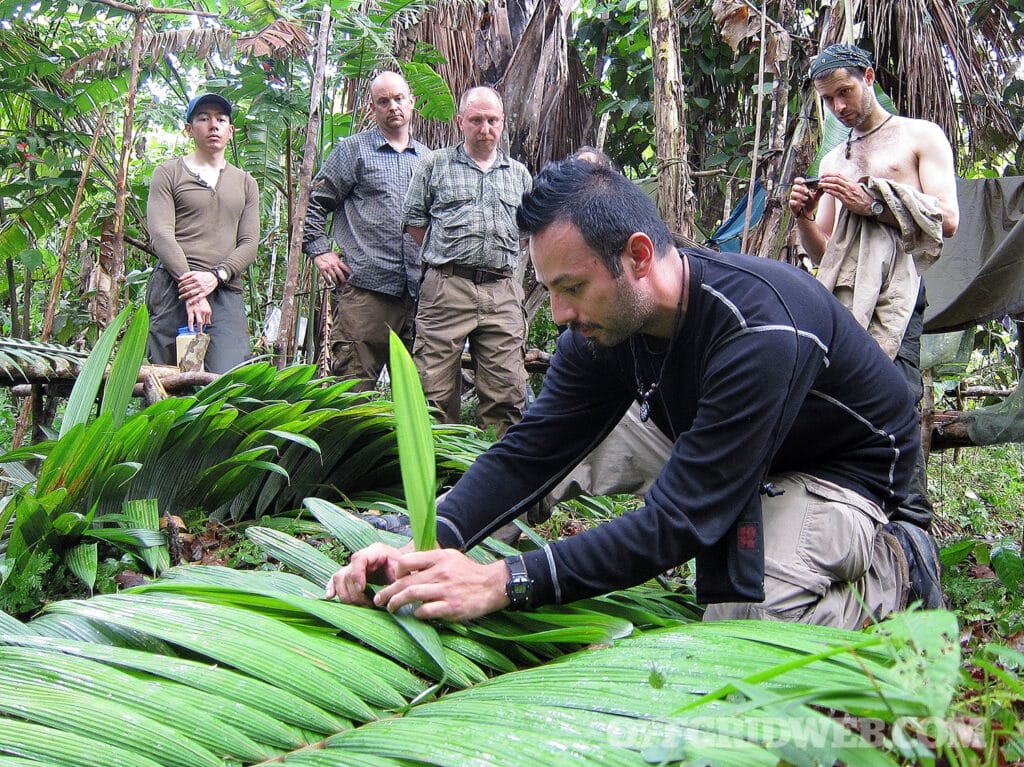
What was that first jungle trip like?
A riot. Five of us: an Alaskan survival instructor, a Maryland bartender hooked by Survivorman, a Google coder who’d never camped but matched my gear from forum posts, me, and Jeff Randall, co-founder of the school. Newbies thrived, no bad habits. Skills carry over, sure, but the jungle’s a reset. We made mistakes — tons — and learned fast. Jeff, a magazine writer I’d read for years, sat across from me for hours and said, “You should do this — write.” I laughed. “I don’t know about cameras or writing.” Two days after we got back, I’m drumming again, but his words stuck.
How’d you leap from drumming to writing and photography?
Jeff hounded me, gave me editors’ contacts, said my forum posts about gear and trips were gold. I’d documented everything — Whitney prep, desert hikes, skill flops — with photos. He told me, “Shoot everything. You never know who’ll need it.” Also: “Don’t ask permission — just shoot. Apologize later if you have to.” That clicked. No posed smiles, just raw shots. I got into manual photography, metering from the hip, built a wild library — grizzly scat, shipping docks, you name it. An editor once asked, “Got animal feces pics?” I did. Shoot everything paid off.
I resisted writing at first. Fear of rejection, the unknown. But Jeff pushed: “Tell your story, rough as it is. Editors’ll fix it.” So, I pitched. Gear reviews, trip tales. They said yes. Drumming faded; this grew. Mistakes fueled it. Every screwup taught me more than success ever did.
Why are mistakes so key for you?
You learn more from your mistakes than your successes, you know. When we teach classes, one of the things I like to say at the beginning is, “The only difference between you guys and us is you’ve probably made a hundred mistakes in the woods. We’ve made thousands and thousands of mistakes.” So that’s why we’re able to do this and release information in this way. So, this weekend, let’s make all the mistakes we can together. We’ll get it right. A friend, Amanda Kay from TV, put it better: “Practice till you can’t get it wrong.” That’s it. No triumph without the flops. It’s life, not just the woods.
Back to the jungle — any close calls?
That 2008 Amazon trip for Dutch TV, Try Before You Die. I’m training a director, star, and cameraman. We finish by 5 p.m. — jungle’s dark at 6, raining till dawn. I set up my hammock a quarter mile off, cozy under the rain’s white noise. Then, CRASH, like a car wreck. An hour of that, getting closer. Live trees dropping, roots too shallow in Peru’s soil, wind and rain toppling giants. Widow makers, random and ruthless. No safe spot to move — just crossed fingers. Morning showed the carnage, fallen titans everywhere. I’d made it, but it was pure luck. Wind’s no joke.
What is the most challenging aspect of survival in the jungle?
Simple: trying to sleep in 90-percent humidity, spending about 10 hours in a hammock or swamp bed.
How do you source food during jungle expeditions?
Nothing is sacred! It’s impossible to starve in the jungle if you’re willing to eat what presents itself. Most things universally taste like chicken, pork, or fish. The gag factor gets most people. Initially, guides are the best food source, as they see and smell things we don’t. They are keen at gathering wild edibles, snakes, sloths, fish, and bats. Eventually, these skills will transfer over to your mental hard drive. Sometimes, a simple ride in a dugout canoe or tuk-tuk boat will literally cause fish to jump into the boat. I call that good living.
What is the one tool you rely on most in the jungle?
I’m inclined to say your brain. This works in all places, including any jungle. However, the more tangible choice is a machete in Latin American jungles/rainforests. In Southeast Asian jungles, a bolo, parang, or golok would be the best tool for that terrain — shorter and thicker.
As someone who regularly travels to different parts of the globe, what advice can you give to someone who is traveling to another country for the first time?
Obey the laws and never lie to officials abroad. Understand that you are out of your country, and your nationality will rarely get you out of the bad situations you got yourself in. Saying, “But I’m Canadian/American,” won’t get you anywhere. However, it will make you and your nationality look foolish. Most importantly, remember that the art of travel is being flexible.
Any standout skill-building trips?
Jungle survival classes at J.E.S.T. Camp in the Philippines (Jungle Environment Survival Training). They trained U.S. and European soldiers for Vietnam: bamboo fire-making, plant knowledge, jungle warfare. No hypothermia risk there, just humidity and awareness. They’ll even teach you to cook rice in a bamboo chamber. Been back multiple times. It’s less about gear, more about doing. Skills trump stuff every time.
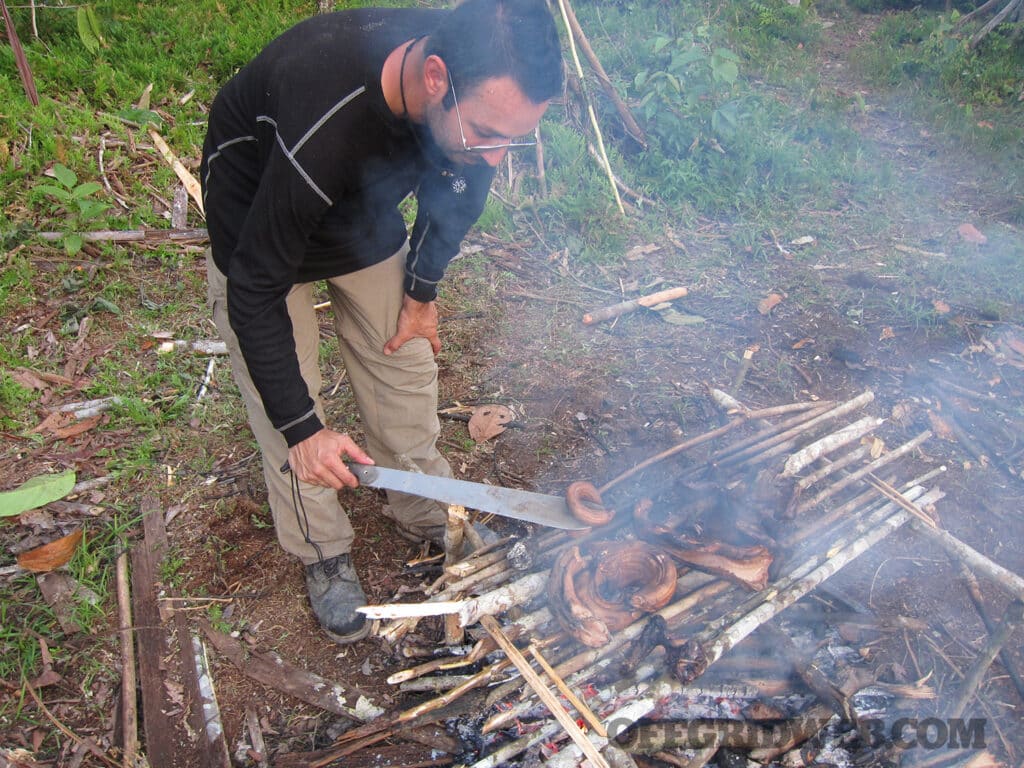
Speaking of doing, you have a brutal frostbite story. What happened?
First time was a wake-up call. December, teaching man-tracking and survival for U.S. Marshals in Alexandria, Louisiana — humid, 50 degrees, no big deal in trail runners and deerskin moccasins. Then, I took a flight to visit my brother in New Jersey. A buddy says, “Snowstorm’s coming, let’s camp.” Snow up to my thighs, 35 hours in thin polyester dress socks, an ultralight trick, less moisture, quick-dry. Feet went numb. Built a fire, massaged my toes, warmed them — big mistake. Rubbing smashes ice crystals into nerves, and fire burns numb skin. Felt pins and needles, slept it off in my bivy. Morning: frozen shoes, hiked out. Shower later, still numb. Two days on, another storm, same deal. Got worse.
Flew to Hawaii next — trail running Waimea Canyon with superficial frostbite. Skyped a friend with a medical background in Ohio. He says, “Three to four months for the sensation to fade, but nerve damage stays. Cold feet? It’ll flare again.” Same with my ears, nose, fingertips — Grand Canyon, Big Bear, no gloves or beanie in my youth. Dumb then, smarter now.
Your minimalist style may be intimidating for some. How do you make it approachable?
It can scare people — deep wilderness, tiny pack. I get why. But I pack like a backpacker and lean on skills, not stuff. It’s comfy for me, and I want others to try it. Great books and guides exist now; nobody’s reinventing fire here. I tell folks, “I did it, and you can too.”
Any moment in the wild where you thought, “This might be it”?
Never. Close calls, sure, but I don’t think I’m done. Closest was with my cousin, the first time I took him backpacking — Lytle Creek, California, November, 4,000 feet. Snow line’s usually 6,500. We’re in hammocks, loving it, sunglasses weather. Then, a freak storm hits — snow at levels unheard of in 20 years. Midnight, it drops to 20 degrees. I’m geared up; he’s got steel-toe boots — terrible for cold. By 1 a.m., I’m sloshing through snow to pee, realizing we’re stuck. Trail’s gone.
By morning, a blizzard lashed us like angry bees, with no rescue in sight, so we slashed our hammocks free using a Swiss Army Trekker, the frozen ropes snapping as we salvaged what we could, abandoning the rest in the snow. I opted to hike out rather than hunker down, but we overshot the trail, climbing above tree line where disorienting white peaks surrounded us. He started shutting down — shivering at first, then claiming he wasn’t cold, just tired, the telltale signs of hypothermia. I slapped him awake, forced melted lemonade down his throat, and fibbed, “Found the trail!” Bear tracks led the way, and after 12 grueling hours, townsfolk stared in disbelief. Superficial frostbite, no hospital. Never panicked — just kept moving.
How’d you stay calm through that?
Mental toughness builds over years — long hikes, bad days. Each tough slog makes the next easier. After, I felt fine — not cold, not tired, just numb. Better than freaking out. Coast Guard stat from my cruise-line days: only 7 percent of people panic in emergencies. Most freeze or follow; few act.
Any animal encounters rival that chaos?
Bears! It started at Mammoth Lakes, California, after setting up for a drumming gig. Dusk settled in, 20 degrees, snow blanketing the ground as I roamed near the cabins, phone in hand. I hung up and caught sight of fresh tracks, their edges crisp, laid down mere minutes ago. My gaze traced them to a hulking brown “couch” lumbering my way, a massive black bear, curiosity glinting in its stare. I froze. Running’s a fool’s game. Instead, I eased back slowly, slipped below a bluff, then picked up pace. Compass out, south to the cabin, straight into bear territory. I crept along, veering onto a snow-draped golf course. Then, 100 yards off, three bears burst into view — two giants and a cub — galloping right at me. Laughing through the adrenaline, I fast-walked toward distant brake lights.
Then, there was Mount Whitney’s base camp, 8,890 feet, my second bear tango. A packed backpacker grid, food stashed in lockers below, no scraps allowed up top. Mid-chat with a stranger, I spotted a black bear nosing around campers sleeping exposed — no tents, just pads beneath a starry sky. We hollered, campers flung gravel, and it bolted like a scolded mutt. No spray needed — numbers scare them off.
Weather or wildlife, what’s your real foe?
Weather, hands down. Falling trees in Peru’s jungle — wind and rain toppling giants — scare me more than claws. Bear encounters need a cool head, but the weather’s untamed. Big Bear’s got bears in name only — never seen one. Mammoth’s 8,000 feet tempt fate, but a tree limb’s my nightmare, not a growl. Robert Pelton nailed it: People are the worst disaster. Weather’s close second — rain, snow, wind. Stuff you can’t outsmart.
One survival nugget from all this?
Slow down — simple, but gold. Rushing screws me every time — spilled gear, botched fires, blurry shots. Slow it, think it through. Music, shelters, photos — mastery starts slow. A YouTuber’s instant fire took 50 fails off-screen. Stop, sit, rethink. I tell students striking ferro rods too fast: “Back up, breathe, you’ve got this.” Works. Applies anywhere — hikes, gigs, life.
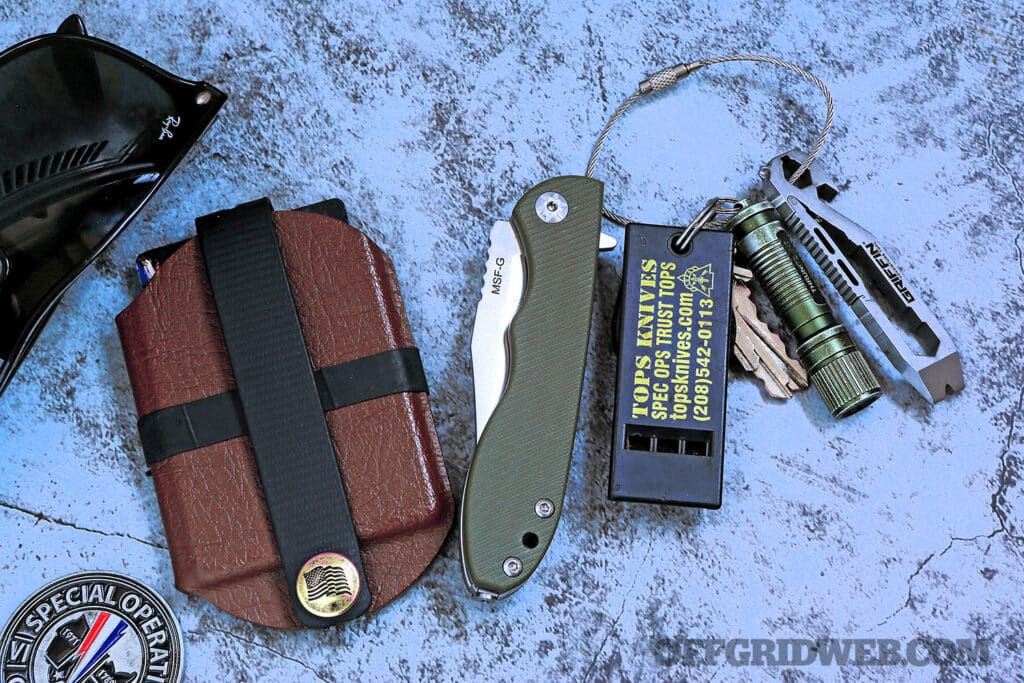
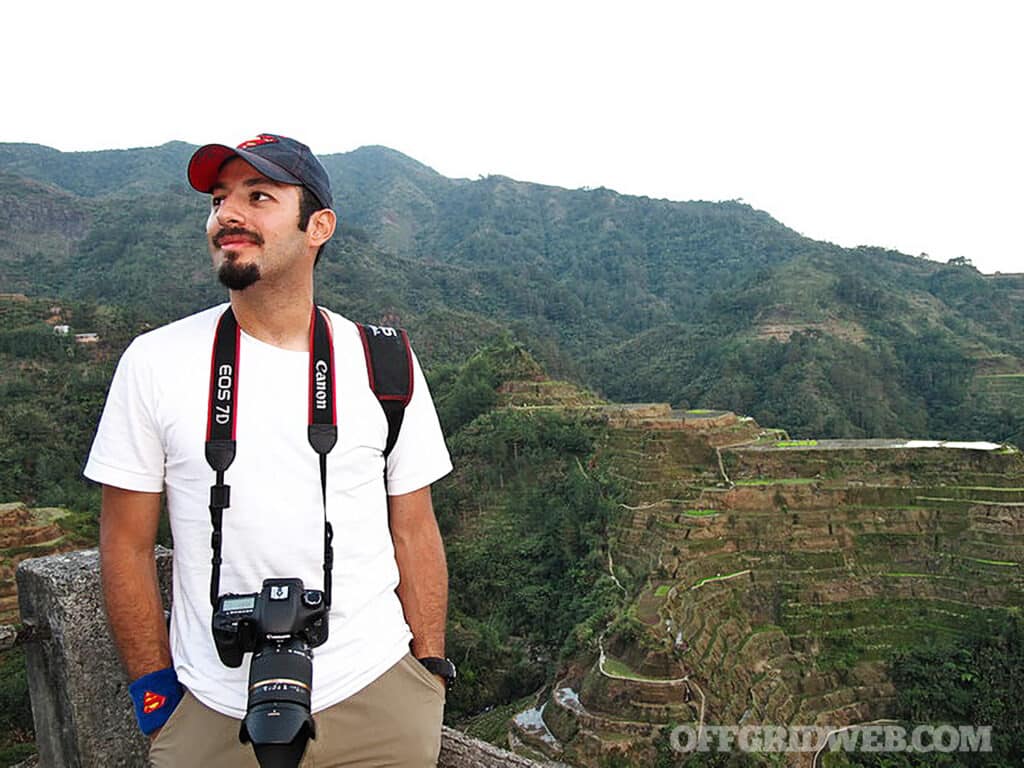
Don’t miss essential survival insights—sign up for Recoil Offgrid's free newsletter today!
Check out our other publications on the web: Recoil | Gun Digest | Blade | RecoilTV | RECOILtv (YouTube)
Editor's Note: This article has been modified from its original version for the web.
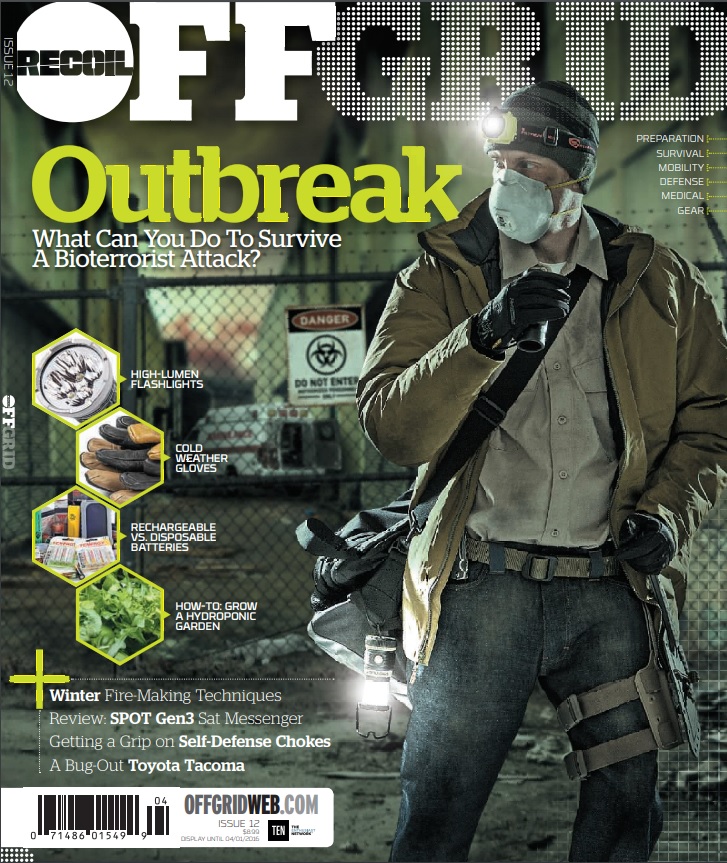 STAY SAFE: Download a Free copy of the OFFGRID Outbreak Issue
STAY SAFE: Download a Free copy of the OFFGRID Outbreak Issue
No Comments